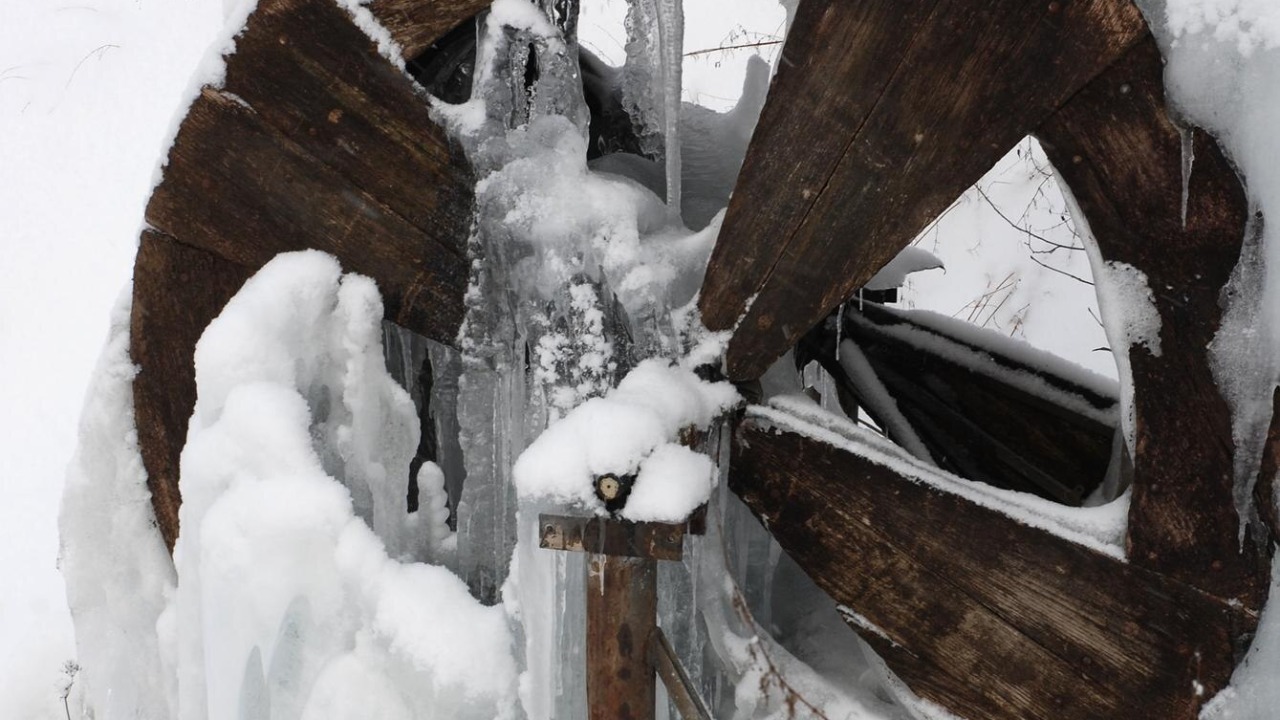
In a remarkable discovery, archaeologists have unearthed a 1,500-year-old wooden reindeer trap, along with other ancient artifacts, from the melting ice in Norway’s mountains. These findings offer a fascinating glimpse into the sophisticated hunting systems of indigenous peoples during the Iron Age. The artifacts, which date back to around 500 CE, include structural elements such as stakes and barriers, designed to guide reindeer herds into traps.
Details of the Reindeer Trap Discovery
The 1,500-year-old wooden reindeer trap, preserved in ice until recent melting, is a marvel of ancient engineering. Its V-shaped design, with stakes reaching up to 2 meters in height, demonstrates the ingenuity of the hunters who constructed it [source]. The trap was discovered in the Jotunheimen mountains of Oppland county, at an elevation of 1,200 meters above sea level. The accelerated ice melt, a consequence of rising temperatures, exposed this ancient artifact [source].
The initial spotting of the trap was made by hikers in the summer of 2025. This led to a professional excavation by the archaeology team from the University of Oslo, who have since been meticulously studying the site and its artifacts.
Associated Artifacts and Hunting System
Alongside the reindeer trap, other artifacts have also emerged from the melting ice. These include 1,500-year-old arrows, leather straps, and bone tools, all of which were part of the reindeer hunting system [source]. Furthermore, evidence of a larger reindeer hunting facility has been found, including driving fences that span over 100 meters, designed to guide herds towards the trap [source].
Organic remains such as reindeer antlers and preserved wood samples have also been discovered. These provide direct dating to around 500 CE through radiocarbon analysis, further confirming the age of the trap and associated artifacts.
Historical Context of Iron Age Hunting Practices
The 1,500-year-old reindeer trap fits into the broader context of Sami indigenous hunting traditions. Such systems were seasonally used in high-altitude passes during migrations [source]. Similar prehistoric traps have been documented in Scandinavia, but the scale and preservation of this find, due to perpetual ice coverage until now, make it unique.
Lead archaeologist Lars Holger Pilø noted, “This is a rare glimpse into communal hunting strategies that sustained communities for centuries.” His statement underscores the significance of this discovery in understanding the survival strategies of ancient societies.
Impact of Climate Change on Ice Patch Archaeology
Warming temperatures in Norway’s mountains have led to significant ice loss, up to 10 meters since 2000. This has resulted in artifacts like the 1,500-year-old reindeer trap “melting out” rapidly [source]. Over 1,000 ice patch sites in Norway have yielded artifacts from the past 6,000 years, a process accelerated by recent summers exceeding 20°C averages.
However, this rapid melt presents challenges. Experts are urging immediate surveys to document sites before irreversible exposure occurs, as the melting ice both reveals and threatens these ancient relics.
Excavation and Preservation Efforts
The Secrets of the Ice project has been methodically excavating the site, using non-invasive mapping and 3D scanning techniques [source]. Conservation techniques have been applied to the waterlogged wood and organics from the melting ice, including freeze-drying at the University of Oslo labs.
Collaborations with Sami cultural representatives have been established to ensure respectful handling of heritage tied to their ancestral practices. This collaborative approach ensures that the excavation and preservation efforts honor the cultural significance of these artifacts.
Significance for Understanding Ancient Mobility
The artifacts reveal seasonal migration routes of reindeer and human hunters across Norway’s mountains 1,500 years ago [source]. The find also points to evidence of trade networks, with imported materials like iron arrowheads suggesting interactions beyond local groups.
These findings have implications for climate adaptation studies, as the trap’s design shows ingenuity in exploiting high-altitude environments. The discovery of the 1,500-year-old reindeer trap and associated artifacts thus provides a valuable window into the past, shedding light on the resilience and adaptability of ancient societies.
More from MorningOverview